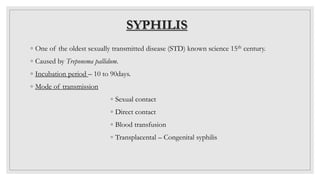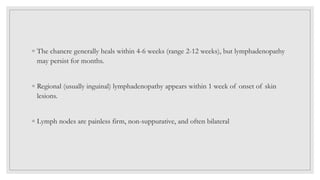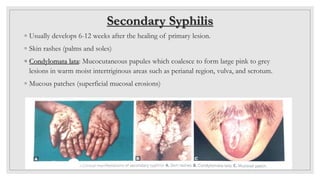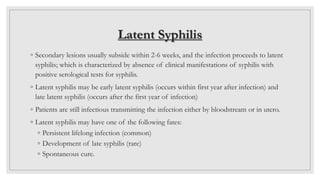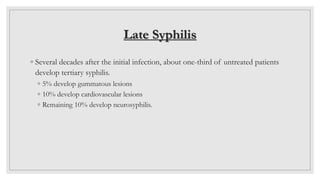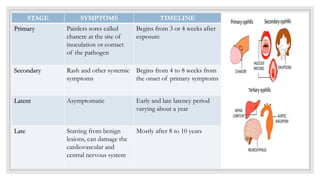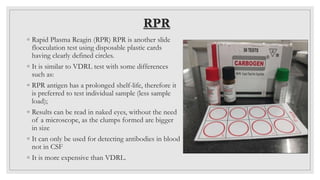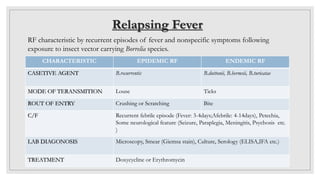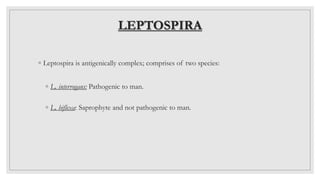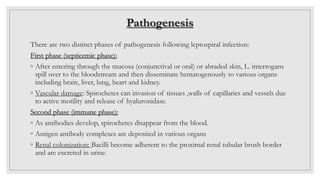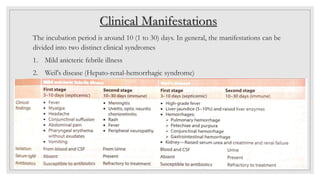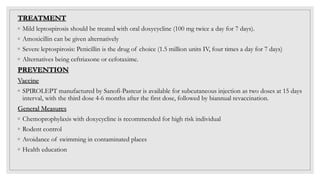This document provides information on spirochetes, including their morphology, classification, pathogenic species, and details on specific diseases caused by them. It discusses the characteristics of Treponema pallidum and Borrelia burgdorferi, which cause syphilis and Lyme disease respectively. It also provides clinical manifestations, laboratory diagnosis, treatment and other relevant details about these diseases. Leptospira interrogans is described as the causative agent of Weil's disease or leptospirosis. The document contains detailed diagrams and explanations.
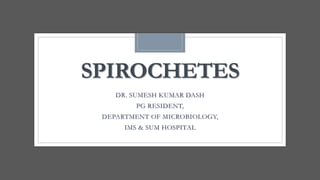
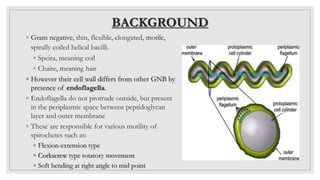
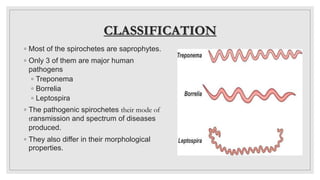

![TREPONEMA
◦ Trepos means “To turn” ; Nema means “Thread”
◦ Thus these are the slender spirochetes with fine spirals and pointed end.
◦ Can’t grow in vitro (Culture media). [Exception of Koch’s Postulates].
◦ T.pallidum causes a sexually transmitted disease, called Syphilis
◦ Nonvenereal treponematoses are transmitted by nonsexual mode (direct
contact) and cause mainly cutaneous lesions.
◦ T.pertenue - Yaws
◦ T. endemicum – Endemic syphilis
◦ T.carateum - Pinta](https://image.slidesharecdn.com/spirochetes-210608122235/85/Spirochetes-5-320.jpg)
